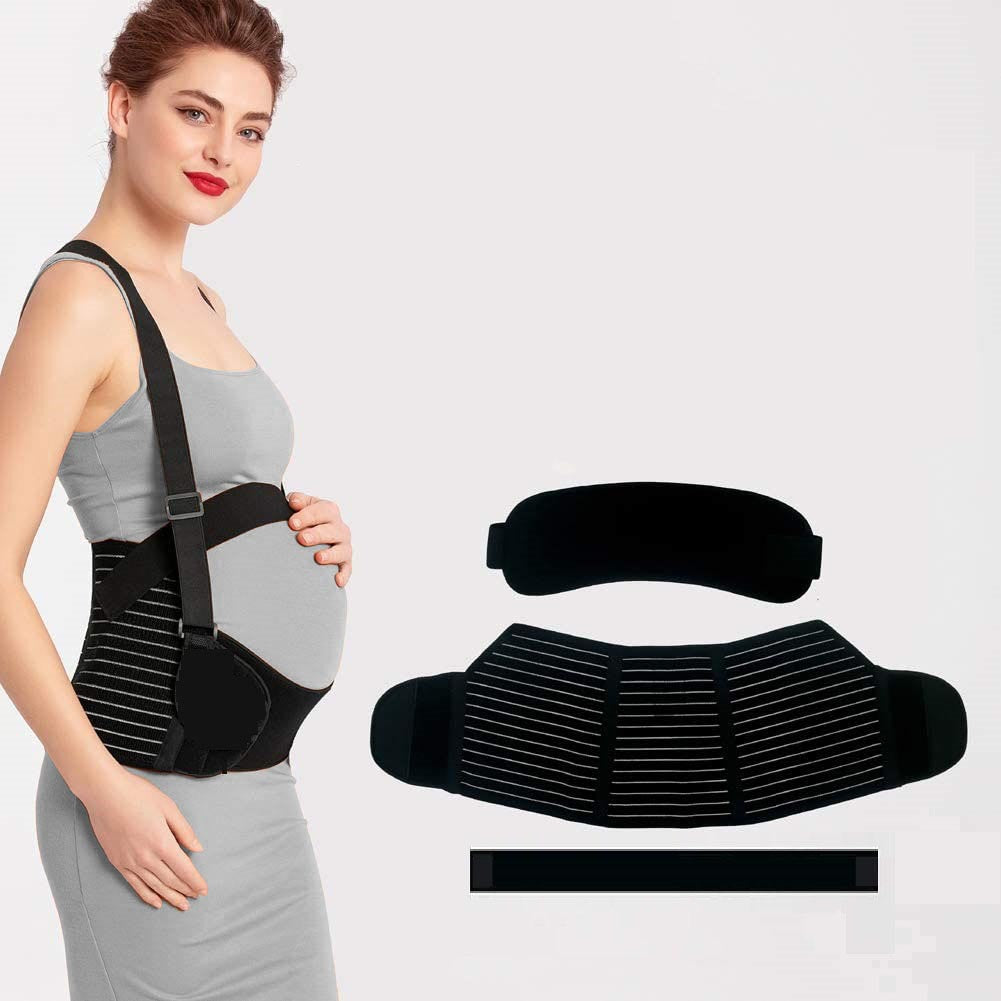
Maternity Support Belts: Improving Back Pain in Pregnancy
Share
It is also 40 weeks of hard work, as you prepare to welcome your little bundle to the world. After going through the common early pregnancy symptoms like morning sickness, fatigue or food cravings (to name a few), the last thing you want plaguing you as you reach your third and final trimester is back pain. While you prep the nursery and try to soak up every last minute of sleep before baby arrives, you want to be as comfortable as possible and, thanks to a little product called a Maternity Support Belt, we can help!

Types of Pregnancy Back Pain:
Research has shown that up to 70% of pregnant women experience back pain at some point during their pregnancy.
The majority of those individuals suffer from one of two types of back pain:
Lumbar Pain: typically felt over and along the spine in the area of the lower vertebrae, just above the pelvis. Lumbar pain is typically exacerbated by prolonged standing or sitting, so it is often noticeably worse as the day progresses.
Posterior Pelvic Pain: typically described as a deep pain in the back of your pelvis, the pain can also be noted to carry through the buttock and the back of the thighs. This is the pain experienced when, for example, getting out of a chair or rolling over in bed.
Of note: Sciatica does occur in a very small percentage of pregnant women. Many people believe that any pain that radiates into their leg is sciatica, and the symptoms of pelvic girdle pain and sciatica can be very similar. A distinguishing difference is that, most often with sciatica, the pain and burning sensation is in one specific leg and is reported to be much worse than the actual back or pelvic pain.
Common Causes of Pregnancy Back Pain:
There are a few factors that contribute to the onset of back pain during pregnancy:
Weight: On average, during a healthy pregnancy, a woman may gain anywhere from 25-35lbs. This additional weight must be supported by the spine and back muscles, as well as your weight bearing joints. This, naturally, increases the work load on these areas and contributes to pain and discomfort.
Centre of Gravity & Postural Changes: As the baby and belly continue to grow, the body must accommodate for that change. As growth occurs, the center of gravity shifts, changing the way the mother moves. This change in posture and gait (some refer to it as developing in to a ‘waddle’ as pregnancy progresses) can have a great impact on the back and pelvic region.
Hormones: A powerful hormone, relaxin, begins to be produced during pregnancy in an effort to ‘relax’ the tissue and loosen the joints about the hip and pelvic region to prepare the mother for birth. While helpful and effective for labour and delivery, during the pregnancy it can also have a relaxing or ‘loosening’ effect on the spine and supporting muscles, causing instability and subsequent pain.
Stress: The correlation between stress and back pain is not specific to pregnant women. During stressful times, many people find they carry their stress in the form of tension throughout their back, which leads to ache and pain. Of course, pregnancy can be a particularly stressful time for many reasons, and so stress can be a significant factor in contributing to back pain symptoms.
What is a Maternity Support Belt?
Made of lightweight, breathable elastic material, the maternity support belt is a non-rigid supportive garment designed for pregnant women to assist in managing pain and discomfort in the abdominal, lumbar and pelvic regions.
How Does the Support Belt Help?
Stability: The brace provides increased stability and support to the back and pelvic region, including the SI joint, during daily activities. By supporting the growing the belly, it can help to evenly distribute the workload and take excess stress off of particular areas to minimize discomfort and pain daily.
Postural Cues: The belt helps to encourage proper posture to minimize stress on the lower back while it accommodates for the changes in gait and centre of gravity.
Compression: Mild compression on the uterus helps to support it and minimize excessive movement of the belly during daily activities.
Where Can I get a Maternity Support Belt?
All of our Arthritis & Injury Care Centre locations carry the Maternity Support Belt in a range of sizes. The size you wear is based on a pre-pregnancy dress size. If your treating healthcare professional has recommended a maternity support, please come in for a complimentary consultation and try the brace on to see how it may work for you.










